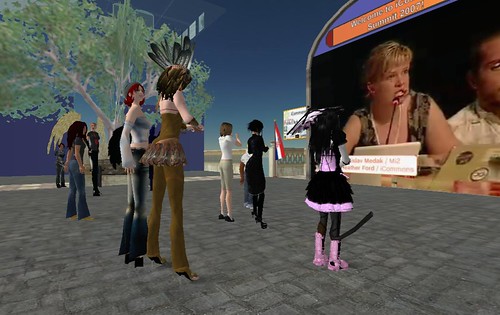 Last week I talked about how openness is driving innovation to new levels in the digital world. This week, fresh off the boat from a one-month stint in Japan, I’ll tell you how the Japanese have gotten innovation right on the button in so many ways.
Last week I talked about how openness is driving innovation to new levels in the digital world. This week, fresh off the boat from a one-month stint in Japan, I’ll tell you how the Japanese have gotten innovation right on the button in so many ways.
Firstly, the City of Sapporo. Ever heard of it? Exactly. That’s why the city has partnered with local business, creatives and educational institutions to launch the “Sapporo: Ideas City” concept that aims to see Sapporo develop into a hub for international creative industries.
This is no mean feat for a country that leaves you wondering whether even “Engrish” (the popular term for the fascinating interpretation of English phrases that you see on locally produced T-shirts and other goods) is understood.
But the City of Sapporo seems to already have gone a long way towards accomplishing this goal — with the Sapporo International Short Film Festival, in its second year, already one of the largest short-film festivals in the world and the iCommons Summit next year bringing together creators, lawyers and policymakers from around the world to talk about how intellectual property can serve creators better.
On my trip, hosted by the city, I met the president and unit manager of a small software-development company called Tsuken Advanced Systems Corporation that epitomises what innovation is all about in Japan.
When we arrived, we were greeted not with the usual iced tea, but with a cup of bright red tomato juice. When my colleague asked what was with the juice, the president of the company replied that, apart from being a software-development company, TAS also made the world’s sweetest tomato juice. “Tomato plants need just the right amount of water to produce sweet fruit. Too much water and they’ll be insipid. Too little and they’ll be sour. So we put a sensor on the tomato plants that tells exactly when the plants need more water.”
This is one of the first characteristics of innovative companies that many companies in Japan have gotten right. Not blindly focused only on software development, they branch out every now and then to do something completely different.
This is done in order to expand their view of how things work in different industries and what kind of expert knowledge they can develop from being intricately involved in something that marries their tried-and-tested expertise in software development with something wholly different — such as farming and food production.
Perhaps they won’t make money from their sweet tomato juice (I, personally, loved the sweet tomato juice but it made me long for a salty Bloody Mary with a bite), but the point is that this kind of branching-out has expanded their expertise and experience of an industry that they will probably continue to make products for in the future.
After hauling in my booty (a case of sweet tomato juice), we got down to business.
Our iSummit traditionally has a series of parallel Second Life events, parties and exhibitions (Second Life, the virtual world, aka “in world”, in parallel to the iSummit, aka “real world”), so I was pleasantly surprised when the head of the innovation unit presented a thoroughly researched presentation on what we had done in Second Life, how we had done it and how they proposed to help us next year by using the Sapporo City Island in Second Life to welcome visitors in-world.
Wow! I was so thrilled by their interest and even more excited about the world that they had built to welcome people to Sapporo — including a robot that answers questions about Sapporo and a glass elevator that takes you to different levels on the island, as well as architecture and trinkets specifically related to the city. But the best thing about this meeting was to learn how committed this company was to developing the scope and skills of its young recruits. The value they see for developing their island in Second Life (there ain’t no money coming from this for now) is that new recruits get to learn new skills and have a space to build new models for computing in a creative space.
I met so many companies just like this while I was in Japan. Everyone was so willing to help out and get involved in international activities that I got the feeling that the Japanese have been self-sufficient for so long and now they’re starting to realise that they need the rest of the world almost as much as we need them.
This article is licensed under a Creative Commons Attribution 2.5 South Africa licence, which means that you’re free to copy, share and even sell (c’mon, I know you want to) this article as long as you attribute me, the author, and provide a link back to this page.


